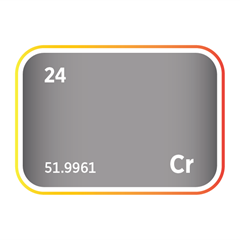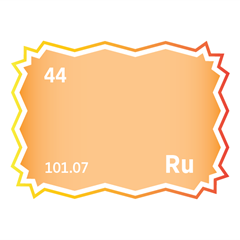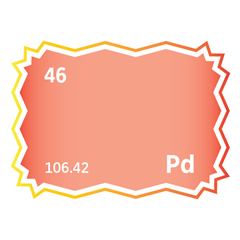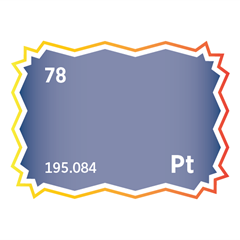AI and Digital Technologies
Critical minerals, policy, and the energy transition
Critical Minerals in AI and Digital Technologies
Artificial intelligence (AI) and digital technologies are rapidly transforming every sector of the global economy, from autonomous systems and smart manufacturing to cloud infrastructure, advanced computing, and quantum research. As these innovations evolve, so too does the demand for the materials that make them possible. At the core of this transformation lies a complex ecosystem of critical minerals, each playing a distinct role in enabling digital performance, energy efficiency, data storage, and high-speed connectivity. Whether it’s the silicon that forms the basis of microchips, the cobalt that enhances memory and logic devices, or the rare earths that power high-performance magnets and semiconductors, these elements are fundamental to building the intelligent, electrified systems of the future. The intersection of critical mineral policy and the energy transition is becoming increasingly urgent. As nations race to secure digital sovereignty and scale clean technologies, ensuring reliable, ethical, and resilient supply chains for these inputs has emerged as a strategic priority. In this context, SFA (Oxford) discusses the hardware behind AI and digital systems. From semiconductors and memory to batteries and optical components, we break down how specific elements contribute to each part of the digital stack.
Critical Minerals used in AI and digital technologies
Key Minerals and their Roles
Semiconductors & Microelectronics
A diverse range of critical minerals underpins the semiconductor and microelectronics sector, forming the material backbone of modern computing. These elements are essential to processing, storing, and transmitting information—and are especially vital in the development of artificial intelligence (AI) technologies. From silicon wafers that serve as the substrate for AI chips to rare earth dopants that enhance performance in high-frequency devices, these minerals enable the computational speed, efficiency, and scalability demanded by next-generation AI systems.
-
Boron is a critical dopant used to alter the electrical properties of silicon. By introducing boron atoms into a silicon lattice, manufacturers create p-type semiconductors that carry positive charge carriers or "holes." This enables the control of current flow in transistors, forming the basis for logic and memory circuits.
-
Silicon is the fundamental material used in most semiconductors and integrated circuits. It forms the base of nearly all microchips due to its excellent semiconducting properties and ability to be precisely engineered at nanoscale. Though abundant in nature, only ultra-pure silicon is suitable for electronics. It is processed into wafers, typically 5 to 12 inches in diameter, which serve as the substrate for advanced computing and AI chips. Silicon remains the bedrock of modern computing.
-
Phosphorus is another key dopant, used to produce n-type semiconductors by adding extra electrons into the silicon structure. Used alongside boron, phosphorus helps establish the alternating p-n junctions necessary for creating transistors and integrated circuits. This precise control over electrical properties prepares the silicon for imprinting circuitry patterns, enabling the encoding of data within silicon chips.
-
Cobalt is used in the metallisation processes of semiconductor manufacturing. It forms reliable interconnects and enhances the performance of logic and memory chips. Cobalt provides better resistance to electromigration and is increasingly used in advanced semiconductor nodes to ensure durability and efficiency.
-
Copper is the primary conductor in integrated circuits due to its excellent electrical conductivity and low resistance. It forms the intricate wiring inside microchips, allowing signals and power to travel quickly and efficiently between components. Copper is essential for high-performance computing and energy-efficient devices..
-
Gallium is used in compound semiconductors such as gallium arsenide (GaAs) and gallium nitride (GaN). These materials outperform silicon in high-frequency, high-power, and optoelectronic applications. GaAs is used in mobile phones and satellite systems, while GaN is crucial for 5G infrastructure, power electronics, and AI hardware due to its excellent efficiency and heat resistance.
-
Germanium is used in high-speed integrated circuits and fibre-optic technologies. It offers better electron mobility than silicon, allowing for faster signal transmission. Although more difficult to manufacture, germanium is essential for specialised semiconductor devices and photodetectors used in telecommunications and high-performance computing.
-
Arsenic is also employed as a dopant in silicon-based semiconductors. It offers greater thermal stability and reduced diffusion compared to phosphorus, making it suitable for advanced chip designs that operate under high voltage or temperature conditions. Arsenic enables fine control over electrical conductivity in complex circuitry.
-
Indium phosphide is a high-performance semiconductor material widely used in optical communications. It supports the development of photodetectors, laser diodes, and transceivers, particularly in data centres and high-speed internet infrastructure. InP enables rapid data transmission and low power loss, making it critical for next-generation networking.
-
Palladium is used in the production of multi-layer ceramic capacitors (MLCCs), which are essential for regulating voltage and filtering signals in electronic circuits. These capacitors are critical for the stability and function of integrated circuits in smartphones, vehicles, and computing devices.
-
Silver is the most conductive metal and is used in specialised integrated circuits and circuit boards. Its high conductivity enables faster signal transmission and greater energy efficiency. Silver is commonly used in high-frequency and precision electronics where performance is critical.
-
Tungsten is used for its exceptional heat resistance and durability. It serves as a key material in transistors and as a contact metal in chip interconnects. Its ability to withstand high temperatures makes it vital in power devices and densely packed semiconductor structures.
-
Gold is prized for its excellent conductivity and resistance to oxidation. It is commonly used in bonding wires, connectors, and contact pads in chip packaging. Gold ensures long-term reliability and stable electrical performance in high-value electronic components.
-
Europium is used to dope compound semiconductors like gallium nitride and indium phosphide. It enhances the optoelectronic properties of these materials, enabling improved performance in lasers, LEDs, and high-frequency electronics essential to AI systems and optical networks.
-
Yttrium is another rare earth element used to modify the electrical and magnetic properties of semiconductor compounds. It improves the efficiency and stability of materials like GaN and InP, supporting advanced applications in photonics, high-speed computing, and communications technologies.
Data Storage (HDDs, SSDs, Memory Chips)
As global data demand accelerates, driven by AI, cloud computing, and connected devices, critical minerals play an increasingly strategic role in enabling fast, reliable, and high-capacity digital storage. These elements form the building blocks of hard disk drives (HDDs), solid-state drives (SSDs), and memory chips, supporting the infrastructure that powers everything from AI training models to consumer electronics and military-grade systems.
-
Lithium powers the batteries that support portable storage devices, SSDs, and memory-rich electronics. In data centres, lithium-ion battery arrays ensure continuous power to storage systems. Its high energy density makes it indispensable for maintaining uptime in mobile and edge computing environments.
-
Silicon is at the heart of solid-state drives (SSDs) and memory chips, forming the transistors and NAND flash memory that store digital information. Its ability to be miniaturised and precisely engineered has made high-density, non-volatile memory solutions both scalable and affordable.
-
Manganese is an emerging material in next-generation memory technologies, such as resistive RAM (ReRAM) and spintronic memory. It is also used in lithium-ion batteries for backup power in enterprise storage systems, ensuring data retention during outages or system failures.
-
Praseodymium is often alloyed with neodymium in NdFeB magnets to enhance magnetic strength and temperature tolerance. This helps improve the efficiency and durability of motors in HDDs, particularly in environments that require stable magnetic performance over time.
-
Neodymium is a key component in neodymium-iron-boron (NdFeB) permanent magnets used in the spindle motors of hard disk drives (HDDs). These magnets allow precise, high-speed rotation of disks, enabling reliable read/write operations. Its strong magnetic properties are essential for compact, high-performance storage devices.
-
Samarium is used in samarium-cobalt (SmCo) magnets, which offer exceptional thermal stability. These magnets are favoured for mission-critical and defence-grade storage systems that must function reliably under extreme temperatures. SmCo magnets maintain magnetic strength where other types may degrade.
-
Gadolinium, a rare earth element with strong magnetic and thermal properties, is occasionally used in advanced memory storage systems. It plays a role in magneto-optical storage technologies and may contribute to future developments in spintronic and quantum memory devices.
-
Dysprosium is added to both NdFeB and SmCo magnets to increase their resistance to demagnetisation at high temperatures. This is particularly important for data storage applications where thermal fluctuations could otherwise compromise the reliability of data retrieval and device longevity.
-
Platinum is used in the manufacture of high-purity glass and crucibles required in the production of memory and storage devices. Its high melting point and chemical stability are critical during the fabrication of semiconductor-grade materials used in memory chip production.
-
Gold is used in memory chips for bonding wires and electrical connectors. Its high conductivity and resistance to corrosion make it ideal for ensuring stable electrical connections in memory modules and storage interfaces, particularly in high-performance and long-life devices.
Essential process gases enabling semiconductor manufacturing
Advanced semiconductor manufacturing relies not only on critical minerals but also on specialised process gases. These gases enable precision, purity, and performance throughout the chip fabrication process—from doping and etching to cooling and lithography. They are fundamental to producing the high-performance semiconductors that power sensors, lasers, infrared systems, and the AI processors driving the next generation of computing.
-
Neon is a critical component in excimer lasers used during the photolithography stage of semiconductor manufacturing. Photolithography involves projecting circuit patterns onto silicon wafers, a foundational step in chip fabrication. The semiconductor sector accounts for the vast majority of global neon demand, and its role is especially crucial in the production of high-density, AI-optimised chips.
-
Helium is used to create inert, stable environments during semiconductor processing, and also serves as a coolant in high-precision applications. Its chemical inertness and thermal conductivity make it ideal for preventing contamination, maintaining temperature control, and ensuring stable conditions during etching, deposition, and inspection stages of chip manufacturing.
-
Arsine gas is employed in the doping of semiconductors, introducing controlled amounts of arsenic into silicon or other semiconductor materials to modify their electrical conductivity. This process is essential in tailoring the performance of logic and memory chips used in everything from mobile devices to AI supercomputers.
-
Krypton and xenon are noble gases used in specialised semiconductor processes such as dry etching, rapid thermal annealing, and thin-film deposition. Their heavier atomic weights and unique optical properties support more precise material removal and heat management. These processes are critical in shaping microchip architecture at the nanoscale, particularly in advanced nodes used for AI and high-speed electronics.
Displays, LEDs & Optical Components
From smartphones and high-resolution monitors to augmented reality (AR) devices and AI-integrated visual systems, modern displays rely on a suite of critical materials. These elements enable vivid colour rendering, touchscreen functionality, precise lighting control, and optical clarity. Whether through phosphors, transparent conductors, or high-purity glass, they underpin the visual interfaces that connect people to digital systems and machines to their environments.
-
Europium is essential for producing the red phosphors used in screens, LED displays, and fluorescent lighting. It enables the sharp red emission that balances full-colour displays in televisions, monitors, and smartphone screens. Its role in high-quality colour rendering is fundamental to both consumer electronics and professional-grade imaging systems.
-
Terbium is the primary green phosphor material in display technologies and energy-efficient lighting. It allows for precise green colour emission in cathode ray tubes (CRTs), LCD backlights, and LED systems. Combined with europium and blue light sources, it supports full-spectrum, high-contrast visual output.
-
Yttrium is used in the creation of yttrium aluminium garnet (YAG) phosphors, which are crucial for white LEDs. YAG phosphors convert blue LED light into white light, used in both general illumination and backlighting for displays. Yttrium is also utilised in older CRT technology and continues to support high-luminosity visual components.
-
Indium is a key ingredient in indium tin oxide (ITO), a transparent and conductive film used in touchscreens, LCDs, OLEDs, and flat-panel displays. ITO enables the responsive touch interfaces and sharp image quality expected in modern smart devices and interactive displays, combining electrical conductivity with optical transparency.
-
Gallium plays a critical role in light-emitting diodes (LEDs), particularly in compounds like gallium nitride (GaN) and gallium arsenide (GaAs). GaN is essential for blue LEDs, which when combined with phosphors, produce white light. Gallium-based semiconductors are also used in optoelectronic components such as laser diodes, photodetectors, and high-efficiency lighting systems.
-
Cerium is used in the formulation of phosphors and in polishing glass surfaces during the manufacture of display panels. Its optical properties help refine the clarity and brightness of screens, while its abrasive use ensures defect-free surfaces in high-resolution displays and precision lenses.
-
Platinum group metals are used in high-purity glass manufacturing, particularly for the production of glass substrates in high-resolution and high-durability displays. Their resistance to corrosion and high temperatures ensures the consistency and quality required for next-generation optical and display technologies.
Connectivity, Wiring & Circuit Boards
The seamless transfer of data and power across electronic systems depends on a suite of critical materials that enable fast, efficient, and durable interconnections. From printed circuit boards (PCBs) and battery contacts to high-speed connectors and semiconductor interfaces, these elements form the electrical and structural foundation of modern computing and AI hardware. Their performance directly affects system reliability, signal clarity, and energy efficiency across everything from consumer electronics to industrial control systems.
-
Magnesium is used to produce lightweight alloys for structural components in electronic devices, including circuit casings and housings. Its strength-to-weight ratio makes it ideal for compact and portable electronics, supporting durable yet lightweight design in laptops, tablets, and embedded systems.
-
Chromium provides corrosion resistance when used in plating electronic components. It protects connectors, switches, and contacts from environmental degradation, helping maintain signal integrity and mechanical durability over extended operational lifespans.
-
Cobalt is used to enhance the performance and longevity of electronic components, particularly in environments subject to high temperatures and wear. It also contributes to the reliability of interconnects and metallisation layers in semiconductor manufacturing.
-
Nickel is widely used in anticorrosive coatings for connectors, battery terminals, and other contact surfaces. Its excellent conductivity and resistance to oxidation make it crucial for maintaining reliable electrical pathways in both consumer and industrial electronic systems.
-
Copper is the primary conductor used across nearly all electronic components. It forms the wiring within PCBs, integrated circuits (ICs), connectors, and data cables due to its high electrical conductivity and cost-effectiveness. Copper ensures efficient data transmission and power distribution across devices of all sizes.
-
Yttrium is used to form yttrium-based oxides that act as insulating layers in advanced semiconductors. As a high-k material, it supports precise transistor control and improved power efficiency—features essential for cutting-edge AI chips and data centre processors.
-
Silver is the best electrical conductor among all metals and is used in soldering materials, electrical contacts, and high-performance PCBs. It is particularly important in applications where minimal electrical resistance and high-speed signal transfer are required, such as telecommunications and advanced computing.
-
Lanthanum is used to produce high-k dielectric materials that improve gate insulation in transistors. These materials are crucial for building energy-efficient, high-speed logic circuits found in modern processors and memory chips.
-
Cerium is used as a dopant in compound semiconductors such as gallium nitride (GaN) and indium phosphide (InP). By modifying their optical and electronic properties, cerium enhances conductivity and overall device performance. This makes it valuable in optoelectronic components like LEDs and laser diodes, which are widely used in AI-enabled systems.
-
Europium is another important dopant in compound semiconductors, particularly for applications requiring high-frequency performance and efficient light emission. It plays a key role in tuning the optical output of GaN and InP devices, which are essential for data communications, advanced displays, and visual technologies.
-
Gadolinium is used to adjust both the magnetic and conductive properties of advanced semiconductor compounds. Its inclusion enhances switching performance and supports the development of next-generation memory systems, including spintronic and AI-accelerated memory technologies.
-
Terbium also contributes to the performance of high-k oxides used in semiconductor devices. It enhances the stability and efficiency of memory and logic operations, enabling further miniaturisation without sacrificing electrical performance.
-
Gold is highly valued for its excellent conductivity and unmatched resistance to corrosion. It is used in connectors, switches, and bonding wires where long-term reliability and clean signal transmission are essential, especially in mission-critical electronics, aerospace systems, and high-performance AI hardware.
Power Supply & Batteries
Portable energy is the backbone of modern electronics, from smartphones and laptops to electric vehicles and AI-integrated edge devices. A select group of critical minerals plays a foundational role in lithium-ion (Li-ion) battery technologies and broader energy storage systems. These materials enable high energy density, longer battery life, and the rapid power delivery essential for today’s mobile and connected technologies.
-
Lithium is the core component of lithium-ion and lithium primary batteries. Its lightweight and high electrochemical potential make it ideal for storing and delivering energy in portable electronics, wearables, electric vehicles, and backup power systems for data centres and communication networks.
-
Graphite is the dominant anode material in nearly all commercial lithium-ion batteries. It stores lithium ions during the charging process and releases them during discharge, enabling the battery to cycle efficiently. Its stability, conductivity, and abundance make it essential to scalable battery production.
-
Manganese is used in various lithium-ion battery chemistries, including lithium manganese oxide (LiMn₂O₄) cathodes. It provides thermal stability, safety, and affordability, making it a common choice in consumer electronics and hybrid vehicle batteries.
-
Cobalt is a key material in Li-ion cathodes, particularly in high-performance batteries. It enables higher energy density, extended cycle life, and reliable performance, especially under demanding conditions. Cobalt is found in widely used chemistries such as NMC (nickel-manganese-cobalt) and is critical to the performance of premium mobile and computing devices.
-
Nickel plays a major role in boosting energy density in lithium-ion batteries, particularly in NMC (nickel-manganese-cobalt) and NCA (nickel-cobalt-aluminium) chemistries. Its inclusion allows for longer-lasting batteries with improved energy storage—crucial for electric vehicles, high-performance electronics, and energy-intensive AI systems.
Optics, Imaging & Advanced Materials
Advanced sensing, imaging, and optical communication systems are central to AI, defence, autonomous technologies, and next-generation computing. A range of critical materials enables these functions—providing conductivity, infrared sensitivity, and laser compatibility. From night vision optics to ultra-fast data transmission, these elements underpin the infrastructure of smart, responsive, and connected systems.
-
Graphite, and its advanced derivative graphene, are valued for their exceptional electrical and thermal conductivity. These materials are increasingly used in high-speed electronics, advanced sensors, and thermal management systems. Graphene, in particular, shows promise in next-gen optoelectronics and photonic devices due to its unique quantum properties.
- Copper has gained renewed interest for short-distance data transmission in AI data centres. As highlighted by industry leaders such as NVIDIA, copper offers lower power consumption compared to fibre optics over short ranges, making it a cost-effective, energy-efficient alternative for internal high-speed data links in AI-driven infrastructure.
-
Germanium is transparent to infrared (IR) light and is a key material in thermal imaging, night-vision optics, and fibre-optic communication systems. Its ability to detect and transmit IR signals makes it essential in military, surveillance, and industrial inspection technologies.
-
Indium plays a critical role in optical communication systems. It is used in components such as transceivers and fibres coated with indium tin oxide (ITO), a transparent conductive layer that improves signal transmission and reduces energy losses. Indium supports high-speed data movement across large-scale digital infrastructure.
-
Praseodymium is used in specific types of lasers and optical materials, especially where precise wavelength tuning is required. It contributes to the development of solid-state lasers for imaging, materials processing, and scientific instrumentation.
-
Neodymium is widely used in solid-state lasers, particularly in neodymium-doped yttrium aluminium garnet (Nd:YAG) lasers. These systems are employed in precision cutting, medical devices, LIDAR, and other optical technologies relevant to autonomous vehicles and advanced imaging.
-
Holmium is used in specialised laser systems, particularly in medical and scientific applications that require specific wavelengths. Its role is growing in niche optical technologies and high-precision applications.

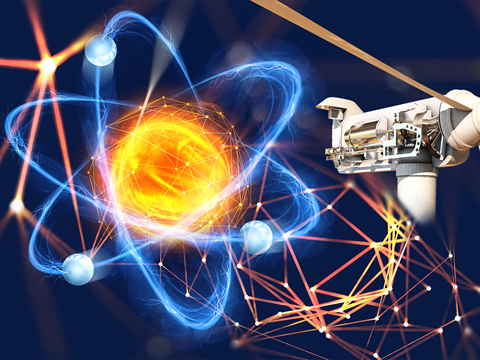
Critical sectors using strategic minerals

Meet the Critical Minerals team
Trusted advice from a dedicated team of experts.

Henk de Hoop
Chief Executive Officer

Beresford Clarke
Managing Director: Technical & Research

Jamie Underwood
Principal Consultant

Ismet Soyocak
ESG & Critical Minerals Lead

Rj Coetzee
Senior Market Analyst: Battery Materials and Technologies

How can we help you?
SFA (Oxford) provides bespoke, independent intelligence on the strategic metal markets, specifically tailored to your needs. To find out more about what we can offer you, please contact us.






